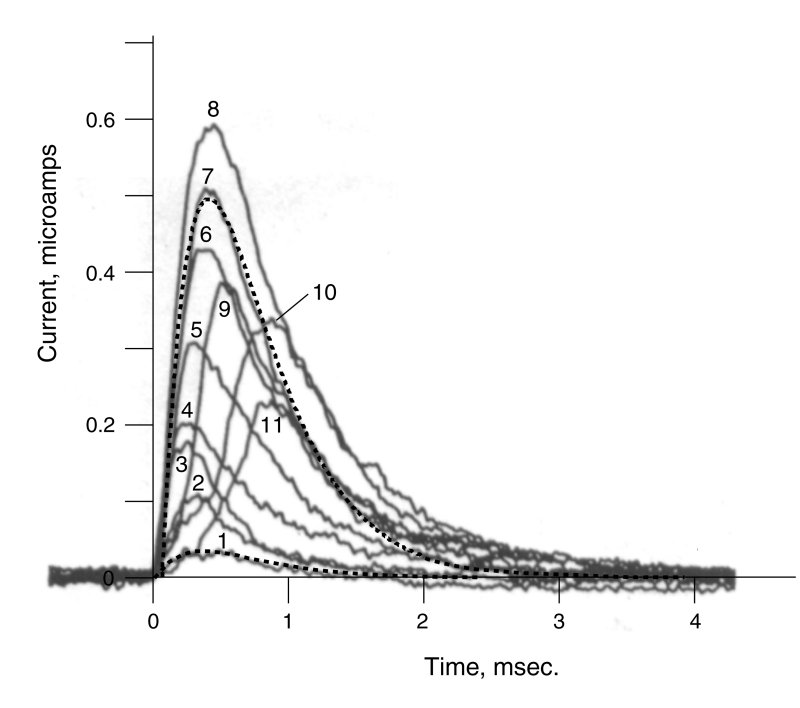
The Electrolytic Theory of the Neuron has exposed a single equation describing the transduction process common to the sensory modalities of vision, hearing and smell.
The Transduction Equation describes the transient response of these modalities with precision under a variety of stimuli. It also includes the effects of the intensity of the stimulus and the precise temperature of the subject during stimulation.
The following figure shows how closely the Transduction Equation overlays the laboratory data describing hearing in rats from Glowatzki & Fuchs in 20021. It is reproduced from page 247 of "Hearing: A 21st Century Paradigm." The overlays to their waveforms # 1 and #7 are shown. The overlay to #7 is a typical response whereas the overlay to #1 represents a unique response described as the Hodgkin Solution in Appendix A cited below.

No other author has provided an equation describing both the attack and decay transient of transduction in a single closed form equation. Similar overlays for vision and smell are presented in Appendix A cited below.
The Transduction Equation shows that the underlying processes of transduction are quantum-mechanical in nature and cannot be explained using the conventional chemical wisdom applied to the neuron.
The mathematics of the Transduction Equation are not amenable to presentation in HTML format. Therefore, the detailed discussion of the Equation, and the associated processes, are presented in the attached Appendix A.
This page is in beta release. The author welcomes and will respond to any comments or suggestions left at the comment page. Section numbers of the main manuscript, available on the web, are shown in brackets. The manuscript can provide more detail when desired. The first number shown is the chapter number; it is followed by the section numbers. Download individual chapters.
1Glowatzki, E. & Fuchs, P. (2002) Transmitter release at the hair cell ribbon synapse Nat Neurosci vol. 5(2), pp 147-154
2